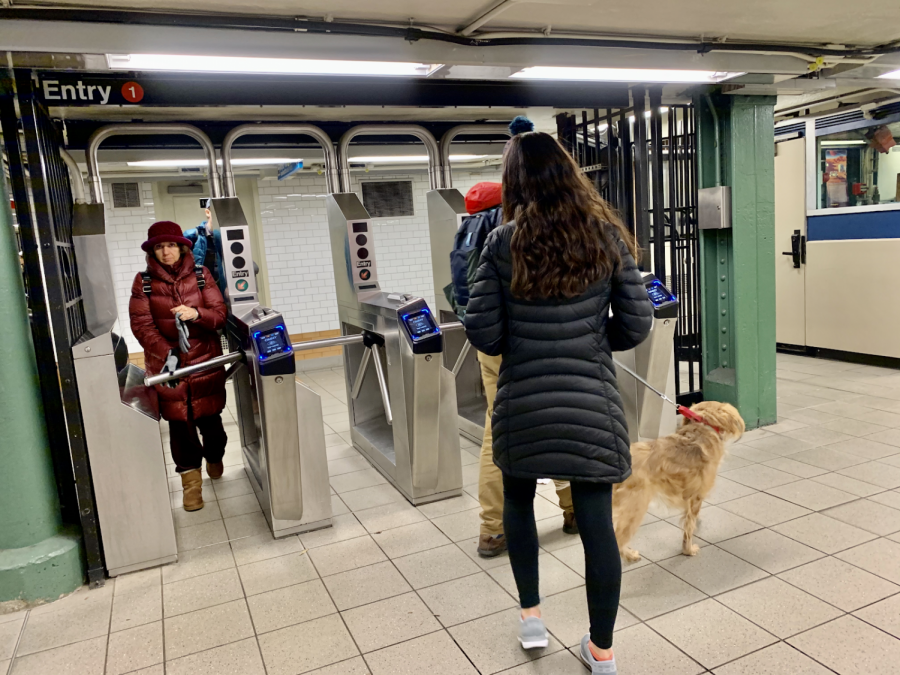The Problem with the MTA’s Plan to Combat Fare Evasion
“This proposal is clearly a ruse to aggressively police low-income and homeless New Yorkers,” Michael Sisitzky, the lead policy counsel at New York Civil Liberties Union, said of the MTA’s plan to increase police officers. “The city would be better served diverting resources toward solutions that would address poverty, not criminalize it.”
This summer the MTA implemented a series of policies to combat fare evasion, including spending $249 million over the next four years to hire 500 new police officers and increasing the fine for tax evasion to $100. Surrounding these new policies have been a large amount of controversy amid viral videos of police brutality and churro vendor arrests.
According to MTA claims, the system lost about $300 million from fare evasion in 2019. Estimates show that about 40 percent of riders evade a fare at least once a year. “Every dollar that doesn’t come to us, in terms of fares that should be paid, is a dollar that we can’t improve in service,” New York City Transit President Andy Byford said.
But is this the best use of 249 million dollars and the answer to the MTA’s struggles?
The MTA’s hiring of new officers, which doubles their police force, is projected to have a cost of $249 million throughout the next four years; the MTA claims that they will save $200 million through these efforts. This is contingent on the MTA being able to actually meet this goal of $200 million dollars. Since the employment of these extra police officers, subway fare evasion has increased from 3.7% in June to 4.9% in August. The increased policing has yet to prove effective.
Furthermore, MTA arrest data shows that those arrested for these fines are disproportionately African-American or Hispanic. 148 people were arrested for fare evasion in the second quarter of 2019. 101 of them were African-American. “The MTA has the audacity to weigh my life against $2.75,” said Dahlia Bekong ’21. “How much longer are we going to put a price on the lives of African-American and poor people in our country?”
This over-policing harms low-income subway riders who cannot afford to pay for the subway, let alone pay a one hundred dollar fine. While New York City has a program that offers reduced fare MetroCards to people who cannot afford them, it has a variety of additional conditions that riders must meet. As a result it serves only 130,000 of the 750,000 of New York City residents living below the poverty line.
The use of this money is particularly surprising given the situation of the subway system. Despite the improvement in service from its 2017 crisis, signal problems and service disruptions occur frequently. “They should use the money on addressing delays, on improving service, and on expanding service to areas that don’t have it. General improvement will make people feel more incentivized to actually pay,” said Kelly Liu ’21.
Many activists have proposed making public transport free and having the MTA fully taxpayer funded. “The high police measures currently being employed are inefficient and invasive,” said Leo Matthes ’21. “We should increase taxes while removing tolls altogether. While it would be expensive, it would guarantee the MTA necessary funding while avoiding the issues associated with fare policing.”
However, fares comprise 46 percent of the MTA’s budget. A TransitCenter report released a year ago concludes that free transit is “a utopian fever dream.” Their spokesman, Ben Fried, notes that transit agencies “may not be able to operate as much service.”
A proof-of-pay option has been proposed as an alternative to swiping a MetroVard that involves authorities checking every other person who uses public transportation, for example. Combining a proof-of-pay option with a more comprehensive reduced fare program for students, the elderly, and the poor, could allow for the MTA to keep more money to improve infrastructure and efficiency, while making sure that public transportation remains accessible to all New Yorkers.
The MTA is making a huge mistake if it thinks adding 500 officers will cover up for long-standing issues. The MTA needs to improve its service and infrastructure problems because as fares increase and problems arise, rider frustration, as well as fare evasion, will only continue to grow.
“The high police measures currently being employed are inefficient and invasive,” said Leo Matthes ’21.
Yona Litwin is a Copy Chief for ‘The Science Survey.' He enjoys the fact that journalistic writing is driven by a variety of voices, and that a single...

